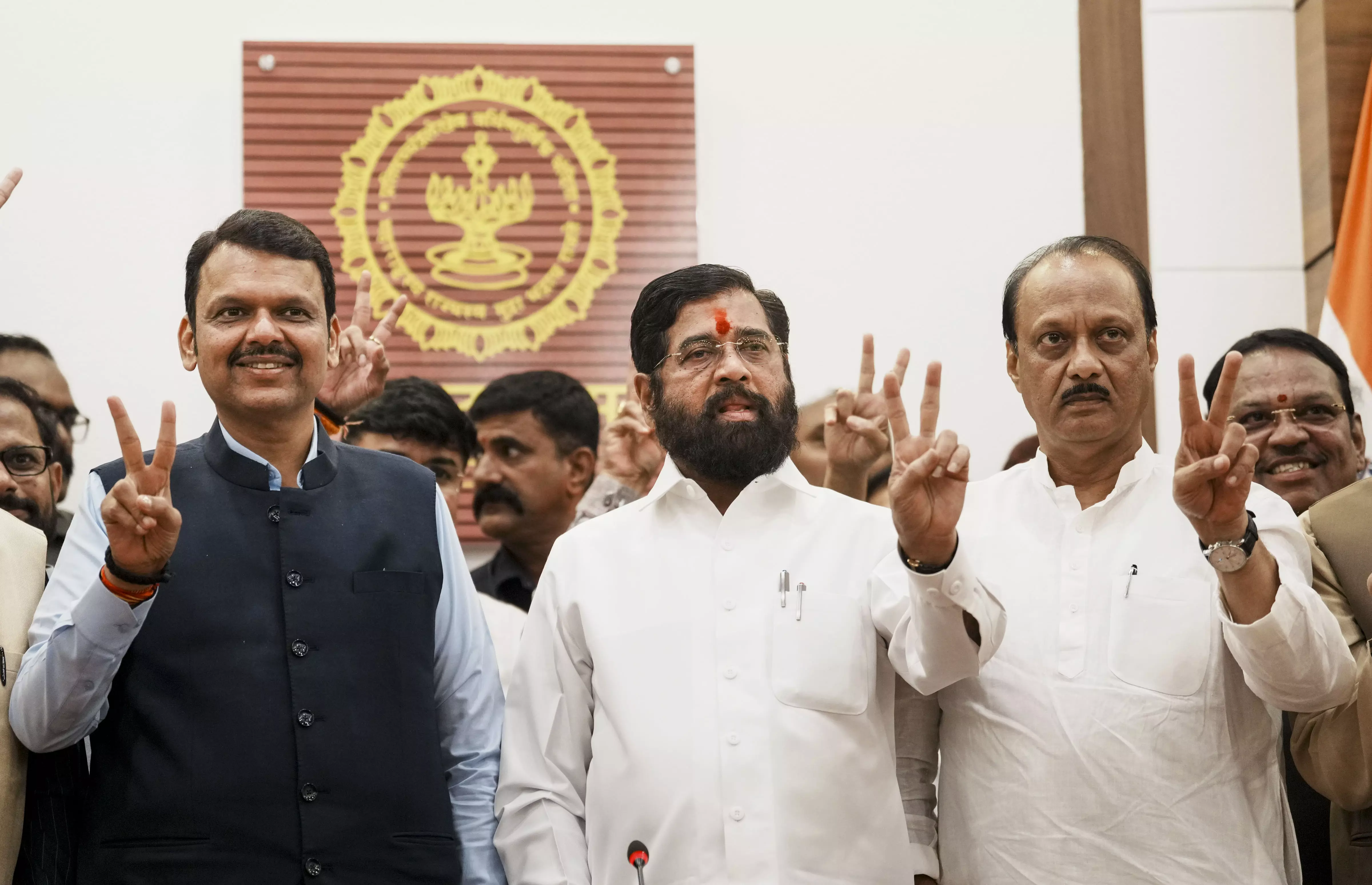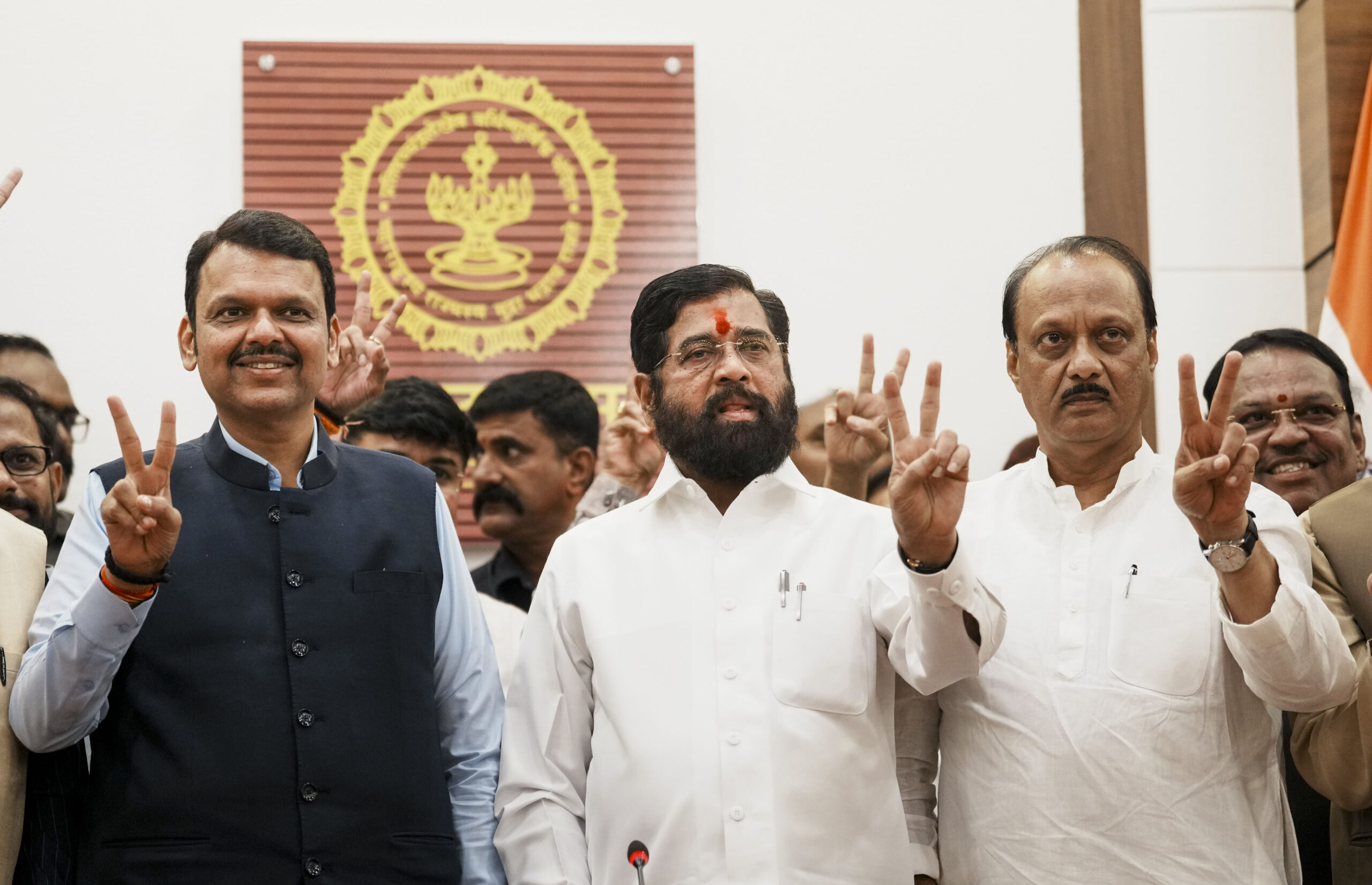
The results of the high-profile Assembly elections in Maharashtra and the less-conspicuous Jharkhand election are intriguing because of what they reveal as deliberate choices by voters in very different circumstances with very different political cultures and social as well as economic histories. The incendiary slogans “Batenge to Katenge” and “Ek hain to safe hain” reportedly galvanised voters in Maharashtra, mobilised by the Rashtriya Swayamsevak Sangh and it worked, as the mandate proves. In Jharkhand the same RSS formula aided by the provocative Himanta Biswa Sharma and earnest hardliner Shivraj Singh Chouhan bombed.
The results birthed two new leaders in Maharashtra, Eknath Shinde and Ajit Pawar, exonerating both from the charge of “gaddar” (traitor) for splitting the Shiv Sena and the NCP by giving them a decisive mandate to supplant dynast Uddhav Thackeray and founder leader Sharad Pawar. The election was a rite of passage in both parties and the new torch-bearers of whatever ideology, values, castes, communities, voters were represented by the original parties endorsed the new leaders.
The massive mandate was for the Mahayuti (BJP-Shiv Sena-NCP), which seems to have emerged as a natural alliance, also implying that the Maha Vikas Aghadi (erstwhile unified Shiv Sena-NCP-Congress) was an unnatural opportunistic coming together. The new government in Maharashtra will be a three-legged stool. How Eknath Shinde and Ajit Pawar evolve as second-rung leaders under the BJP’s stewardship will play out in the next five years. The other transition, the outcome most desired but not achieved, is to watch whether the BJP finally makes it as Maharashtra’s dominant party, a position held by the Congress for decades. Till then, the BJP, hard-working, ruthless and persistent as it is, has miles to go.
In Jharkhand, Hemant Soren was anointed the leader of the different tribal communities, winning 27 of the 28 seats reserved for tribals in the 81-member Assembly. This is an achievement that is more significant than it seems, as tribal representation was fractured in the past and it has become unified under the Jharkhand Mukti Morcha and Mr Soren now. Having undergone arrest and imprisonment, the 2024 mandate is a new start for the leader and his relative weight within the INDIA bloc.
The Maharashtra result confirmed the apprehension of the secular-liberal-progressive coalition that the Congress is a bad team player, avaricious though minus the capability required to convert its ambitions into results, and that Rahul Gandhi’s inattentive, fitful leadership is a liability. While the assessment of the Cong-ress, its capabilities and its leadership is entirely correct, the blame for the disastrous performance of the Maha Vikas Aghadi versus the Mahayuti does not lie entirely with the grand old party. Sharad Pawar, grand old man of Mahar-ashtra politics and India’s wiliest statesman and best matchmaker, is also at fault: he didn’t realise that his era had ended. The result will be the bitterest pill Pawar Senior must swallow, because the people have chosen his successor, Ajit Pawar. In both states, voters showed a distinct preference for incentives, confirming what voters have opted for in other states. There is a pattern taking shape on how decisions are being made by voters, which suggests that the insidious appeal of militant Hindutva needs a thick layer of sugar coating to make it go down. The sugar-coating effect was evident in the Madhya Pradesh, Chhattisgarh and Rajasthan elections, and confirmed in the Haryana and now Maharashtra elections. The Mukhyamantri Maiya Samman Yojana, a direct cash transfer to women, the Rs 1,000 stipe-nd to unemployed youth, credit cards for students pursuing higher education, a stipend that would partly meet the prohibitively expensive cost of coaching for all India examinations worked for Mr Soren, confirming that the pattern holds across all states, be they BJP-ruled or otherwise.
The two state elections in this phase, the earlier elections in Haryana and Jammu and Kashmir as well as the 46 byelections held simultaneously with the Maharashtra and Jharkhand contests are significant in ways beyond the obvious. Did these elections retrieve Narendra Modi’s reputation as the most popular leader across India and reaffirm the BJP’s acceptability along with its communally divisive identity politics and its conviction that it deserves to establish Hindutva hegemony in India? The other question that the Maharashtra election and not the Jharkhand election throws up is: does the RSS have the capacity to transform the outcome of elections? The assumption that the RSS held back its vast network of grassroots workers and influencers in the Lok Sabha 2024 elections and unlea-shed this army of mobilisers in Maharashtra must be re-examined, because it failed in Jharkhand.
If any conclusions are to be drawn from the differences in outcome, it must take into account local-level differences, that is, the specifics that separate one region from another. It raises questions about the ability of the BJP-RSS to customise their campaigns to match the particular character of politics and voters in different states. Politics in a country with as many diversities as India cannot be conducted on the basis of a single format with no accounting for variations.
The other crucial conclusion is that regionalism is thriving, that can’t be said about homogenising-hegemonistic Hindutva with the same certainty. The BJP-led NDA has not acquired any new territory. And the INDIA partnership has plunged deeper into a crisis, because the stakeholders and the helmsman, Sharad Pawar, are wobblier than ever. The Congress performance has been a disgrace; the regional parties barring Uddhav Thackeray’s rump of the Shiv Sena and the NCP’s Sharad Pawar rump have done well. Mamata Banerjee, despite the massive, prolonged, public protests over the rape-murder of a junior doctor, has pulled off a major victory winning all six seats; Mr Soren is ensconced as Jharkhand’s tallest leader.
These results seem to suggest that Narendra Modi may well be mistaken about the advantages of “One Nation-One Election”; that plan may actually be inimical to his ambitions; without the six-month gap between elections, he may not be where he is today, that is, claiming that he alone can keep India safe by keeping it within the BJP’s embrace. The other mistaken notion that Mr Modi must correct is that he has steered India on the course of high-speed transition to Viksit Bharat, that is, affluent developed India. He has not; the much-maligned cash for votes schemes have been game-changers, because there is a cost-of- living crisis. And, gravy train strategies coupled with a reputation for dirty tricks by Indians doing business are seriously inimical not only to his goal of Viksit Bharat, but to India’s potential to be an economic powerhouse, an alternative as the world pursues de-risking plans.
